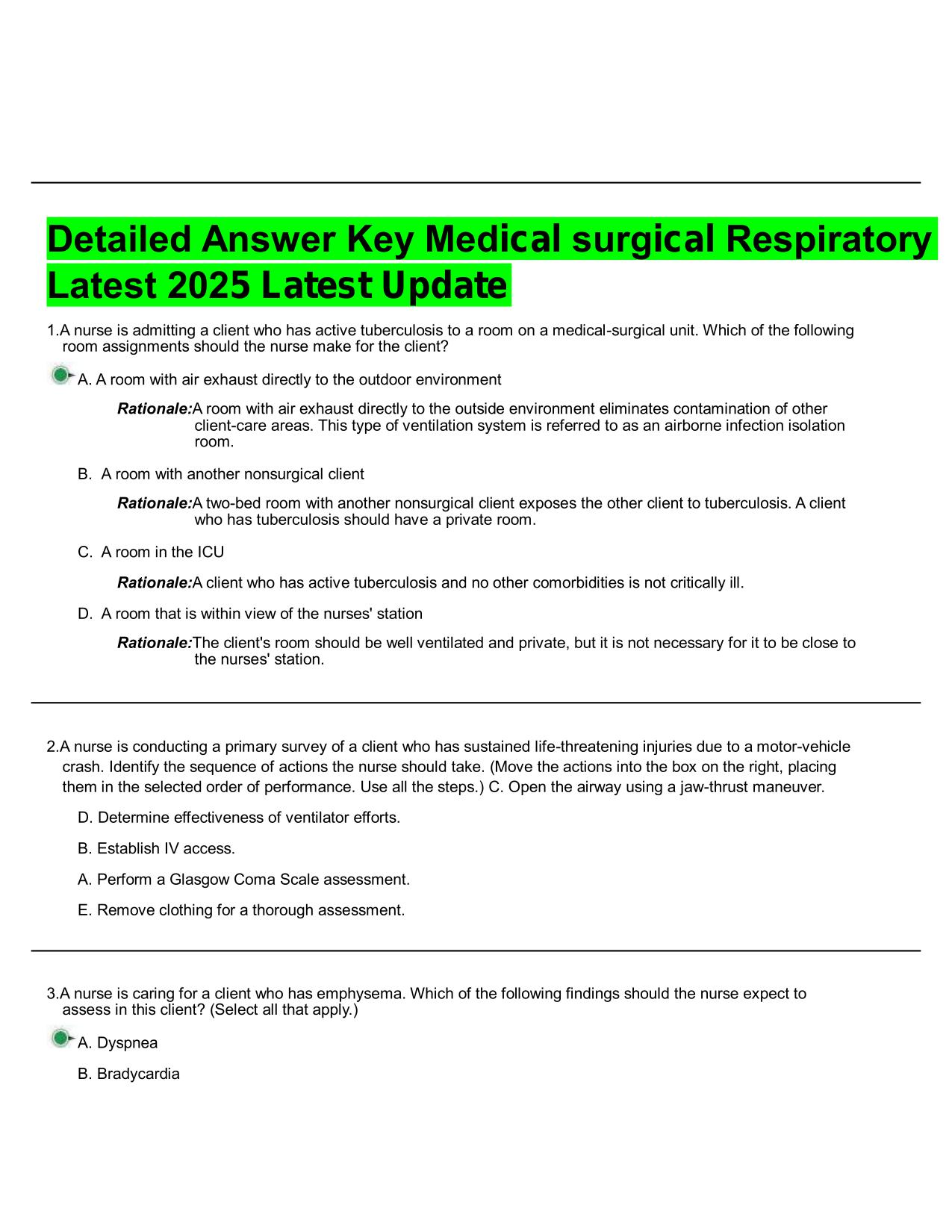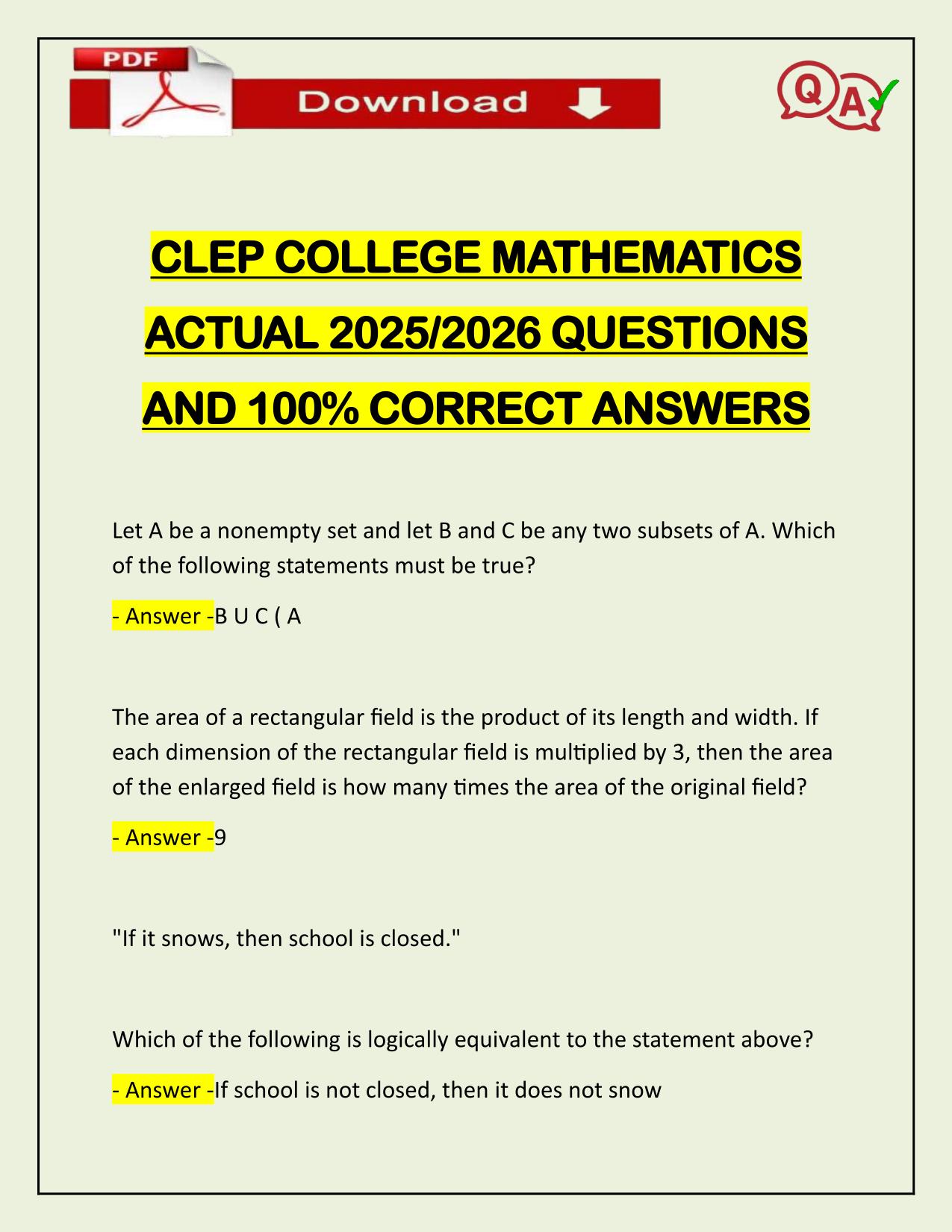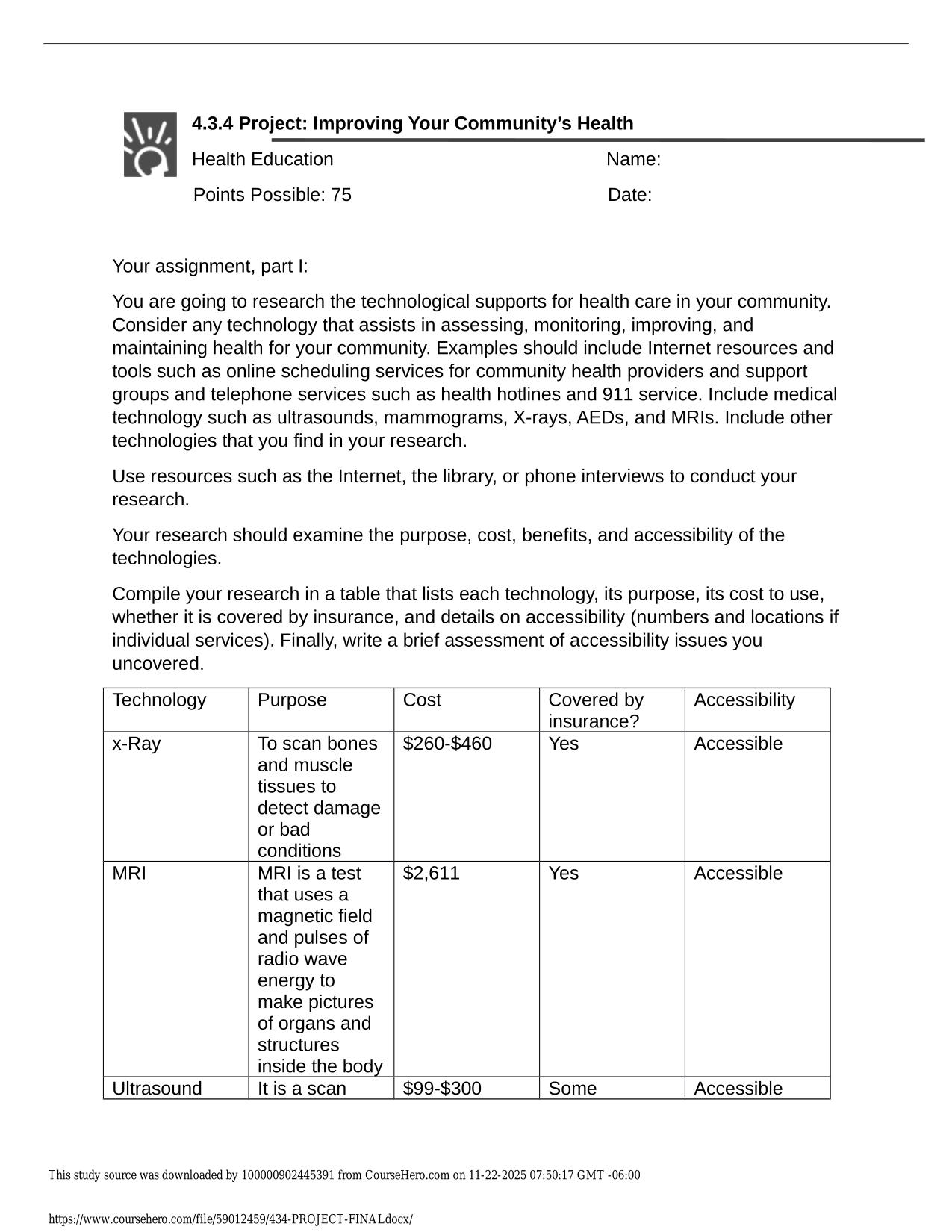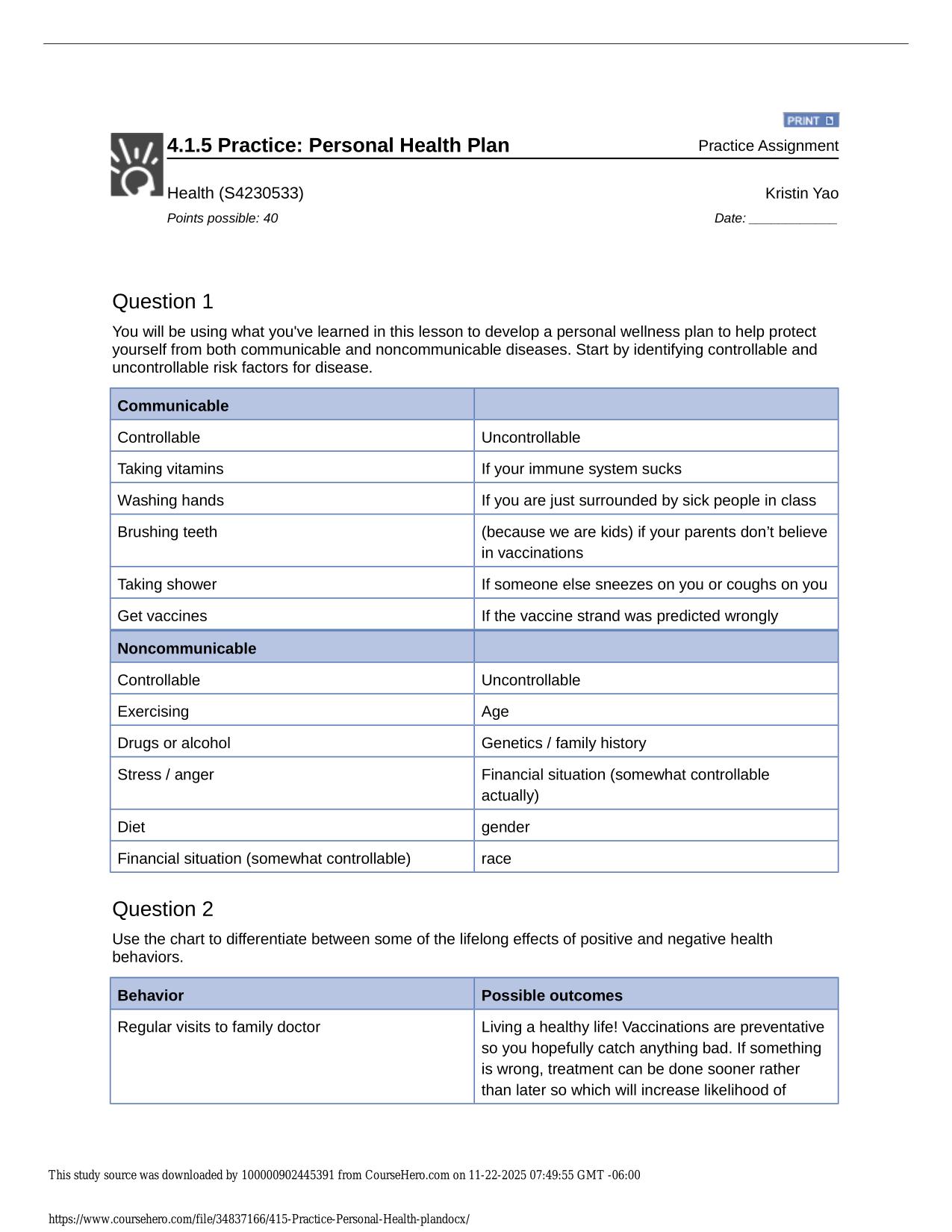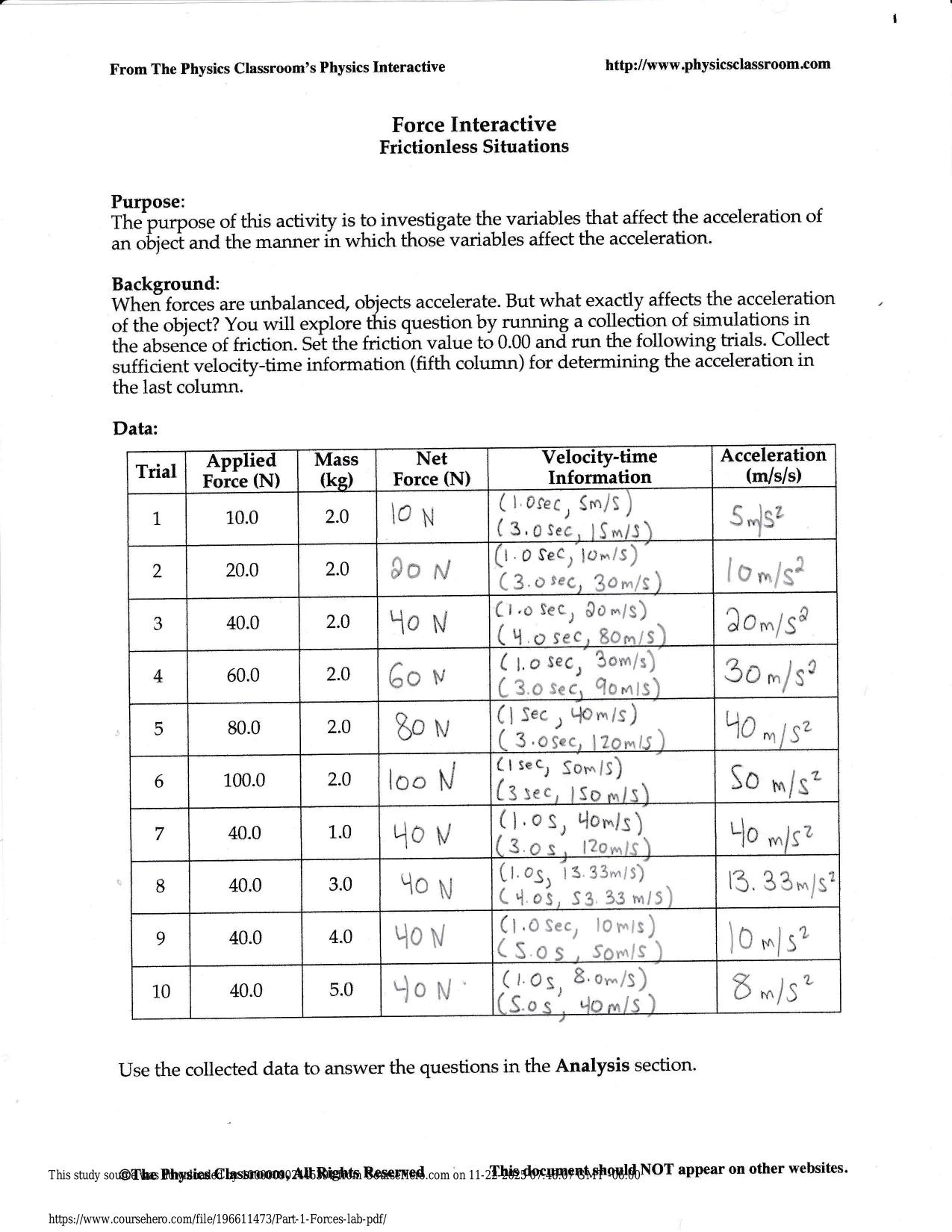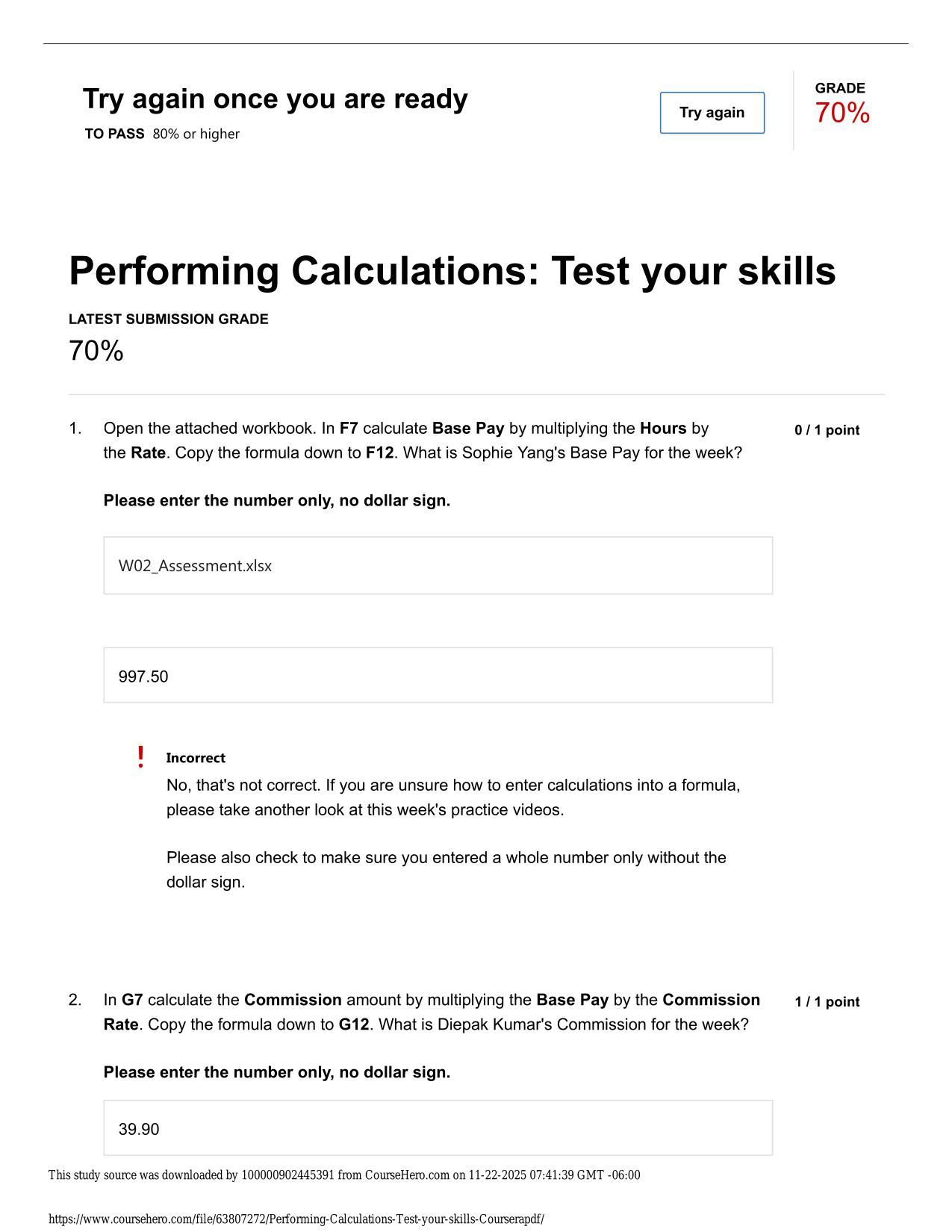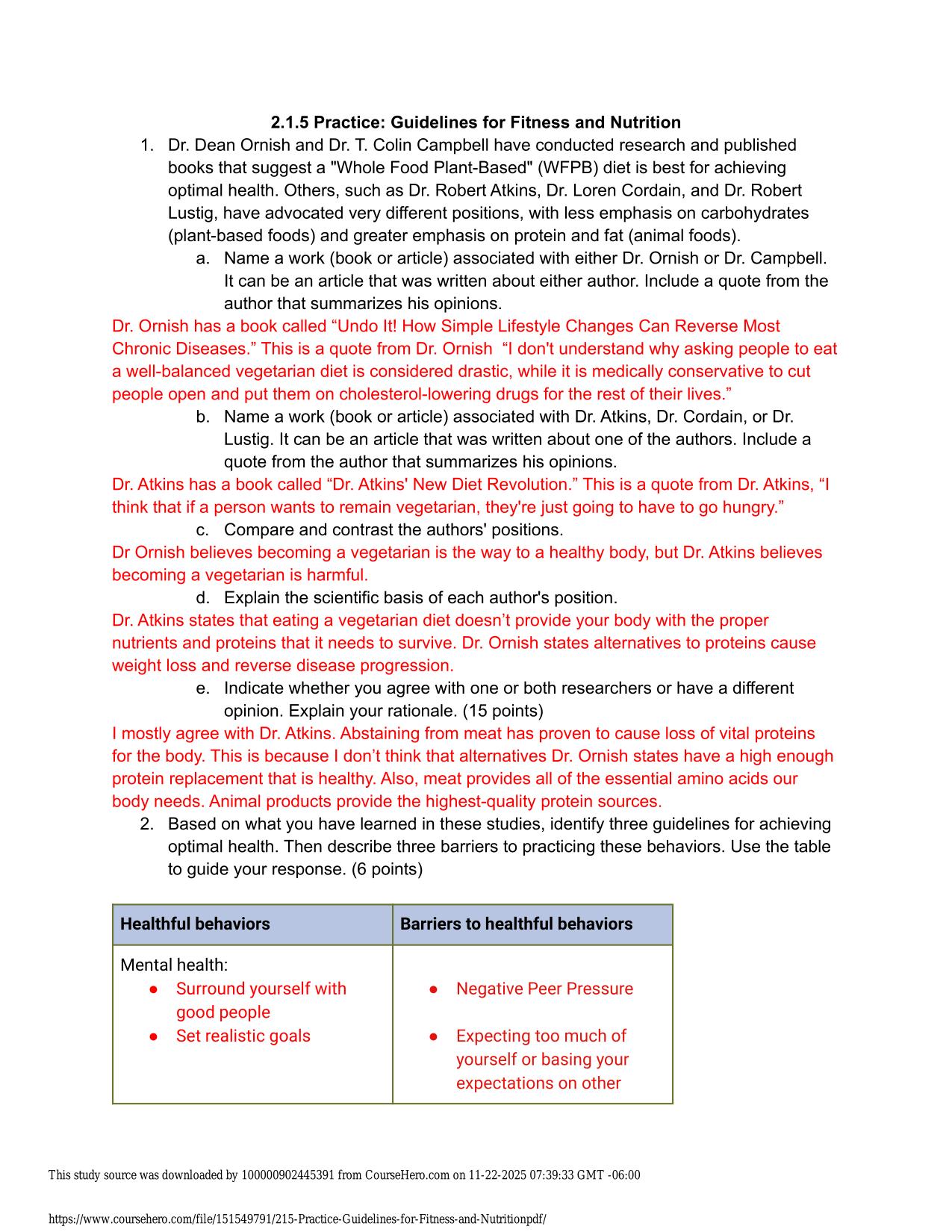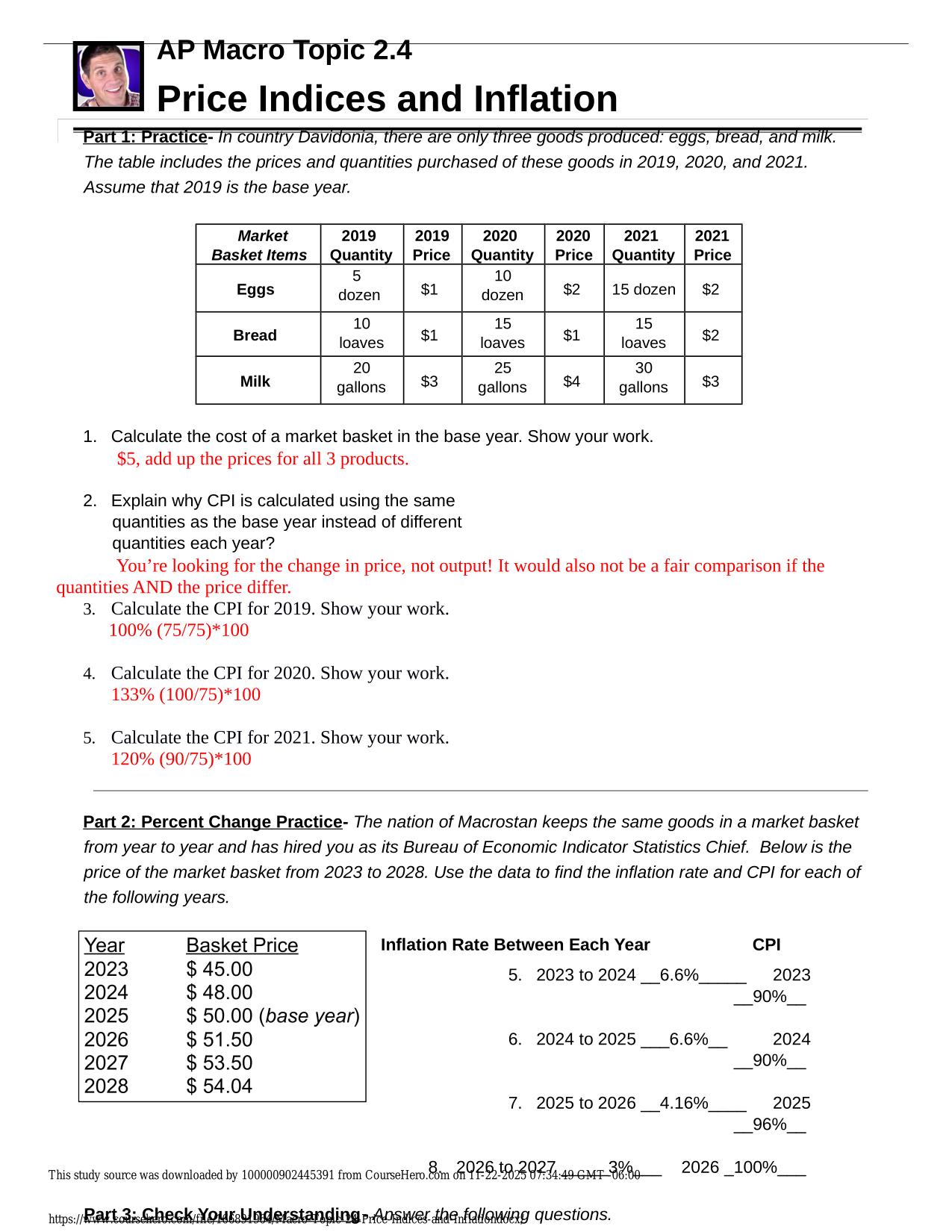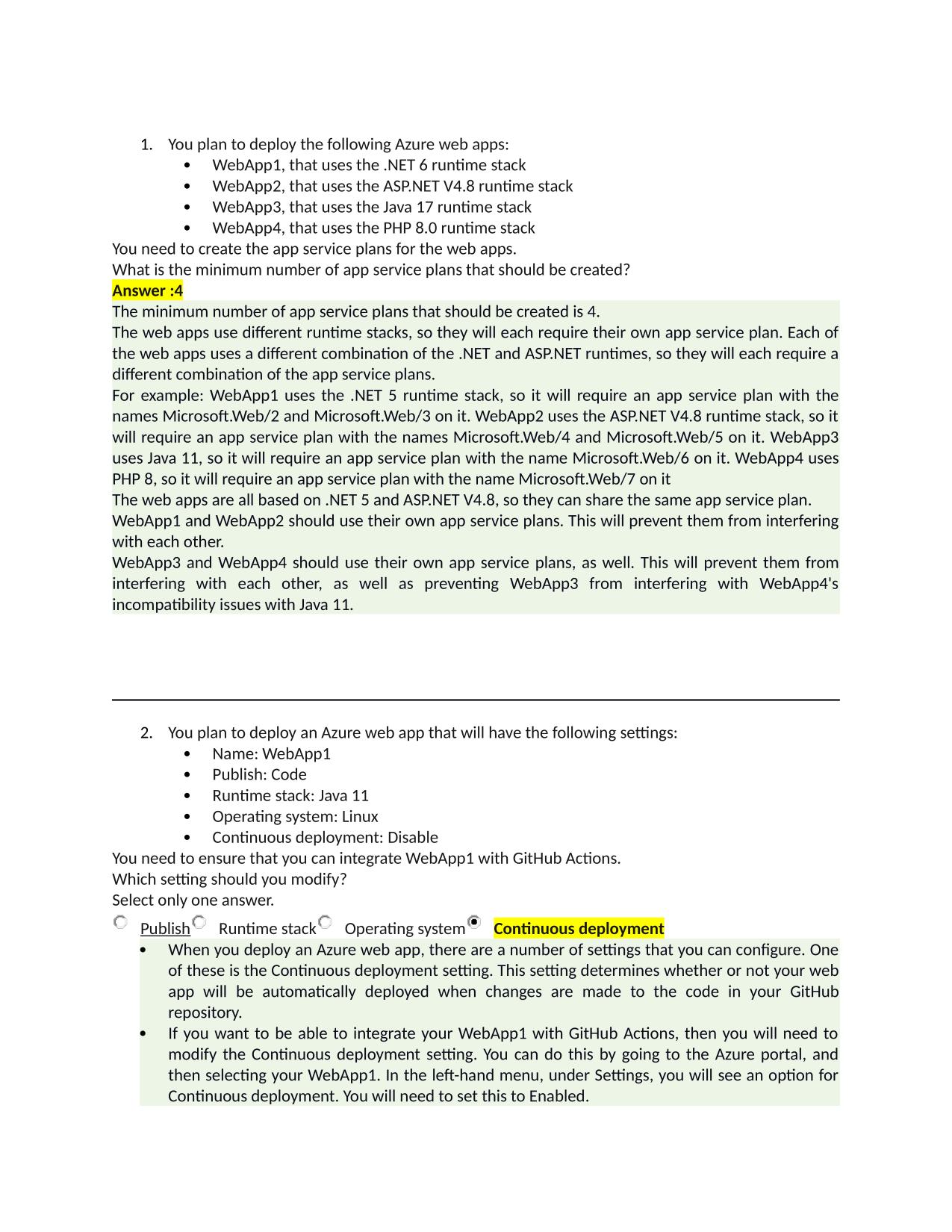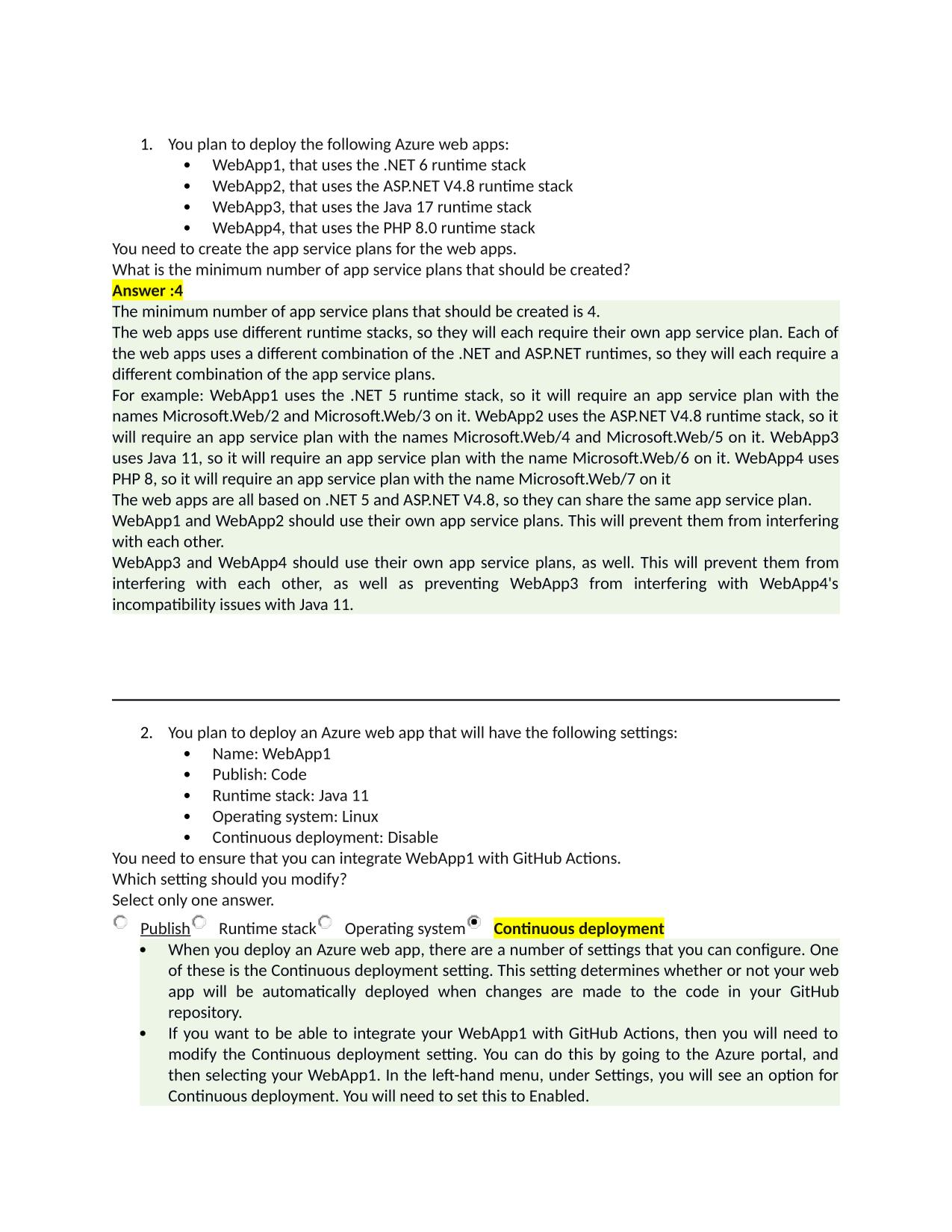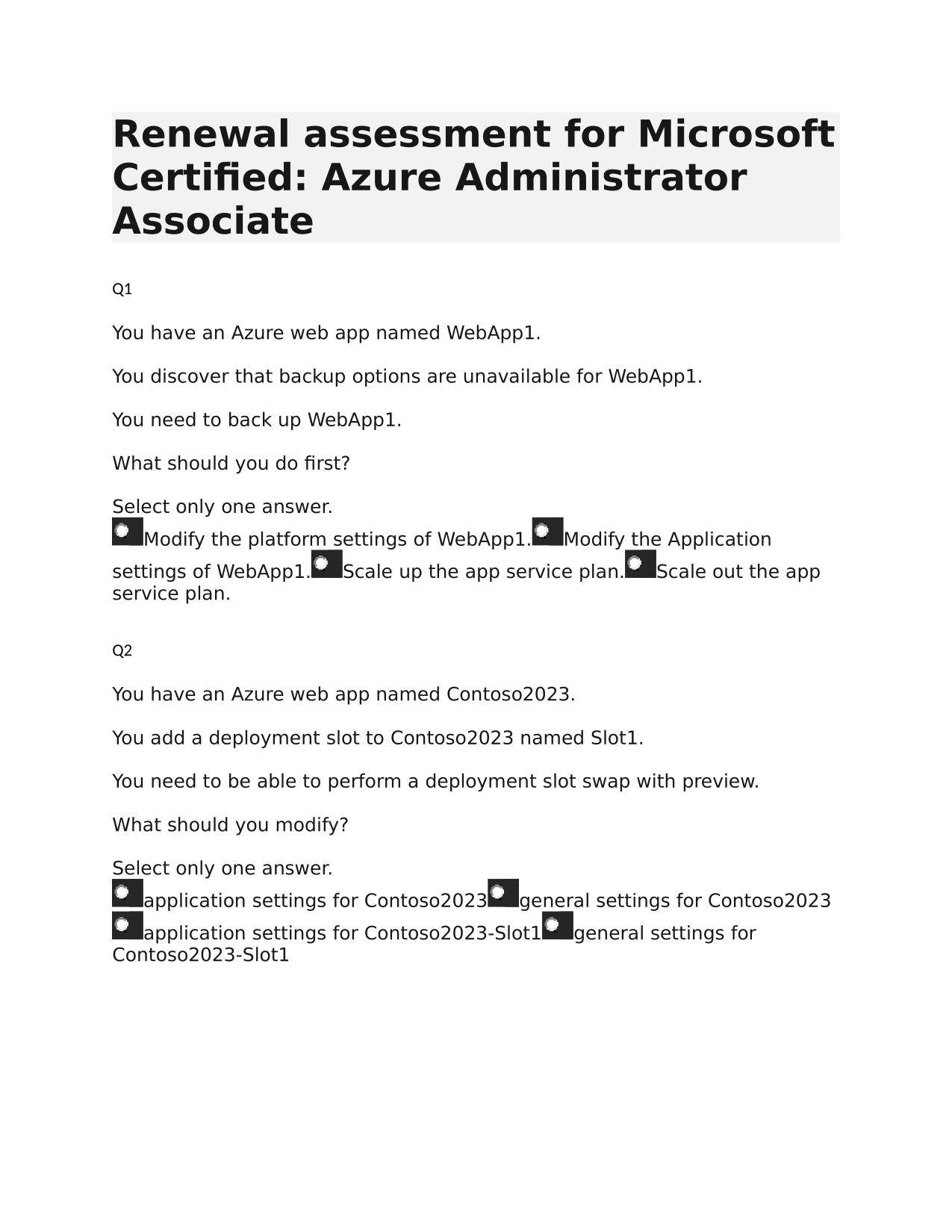ATI Medical Surgical Respiratory Detailed Answer Key 2025/2026
Course:
Medical surgical Respiratory
Institution:
Medical surgical Respiratory
ATI Medical Surgical Respiratory Detailed Answer Key 2025/2026 .A nurse is admitting a client who has active tuberculosis to a room on a medical-surgical unit. Which of the following room assignments should the nurse make for the client? A room with ...
After purchase, you get:
✅ Instant PDF Download
✅ Verified answer explanations
✅ Refund if not Satisfied
✅ Prepared for 2025/2026 test cycle
Overview
The explanations focus not only on the correct answers but also on why other options are incorrect, improving your decision-making accuracy. Understanding what makes wrong answers wrong is often more educational than just knowing what makes the right answer right. Students find this all-inclusive approach helps them eliminate bad choices more quickly during actual exams. It's like having someone point out all the traps and pitfalls before you encounter them on test day. ATI Medical Surgical Respiratory Detailed Answer Key 2025/2026 blends conceptual understanding with exam-level challenges, giving learners a realistic sense of readiness. The material helps bridge the gap between knowing the content and applying it under exam conditions. Many students find they understand concepts more deeply after working through these applied exercises. That deeper comprehension stays with you long after the exam is over.
Who Is This For?
A helpful guide for individuals needing methodical repetition and progressive question difficulty tied to ATI Medical Surgical Respiratory Detailed Answer Key / learning goals. Many users appreciate how it gradually increases challenge levels. The building-block approach supports sustainable learning progress.
Related Keywords
Detailed Study Description
Frequently Asked Questions
Document Information
| Uploaded on: | November 1, 2025 |
| Last updated: | November 17, 2025 |
| Number of pages: | 64 |
| Written in: | 2025/2026 |
| Type: | Exam (elaborations) |
| Contains: | Questions & Answers |
| Tags: | ATI Medical Surgical Respiratory Detailed Answer Key 2025/2026 .A nurse is admitting a client who has active tuberculosis to a room on a medical-surgical unit. Which of the following room assignments should the nurse make for the client? A room with air exhaust directly to the outdoor environment Rationale:A room with air exhaust directly to the outside environment eliminates contamination of other client-care areas. This type of ventilation system is referred to as an airborne infection isolation room. B. A room with another nonsurgical client Rationale:A two-bed room with another nonsurgical client exposes the other client to tuberculosis. A client who has tuberculosis should have a private room. C. A room in the ICU Rationale:A client who has active tuberculosis and no other comorbidities is not critically ill. D. A room that is within view of the nurses' station Rationale:The client's room should be well ventilated and private, but it is not necessary for it to be close to the nurses' station. 2.A nurse is conducting a primary survey of a client who has sustained life-threatening injuries due to a motor-vehicle crash. Identify the sequence of actions the nurse should take. (Move the actions into the box on the right, placing them in the selected order of performance. Use all the steps.) C. Open the airway using a jaw-thrust maneuver. D. Determine effectiveness of ventilator efforts. B. Establish IV access. A. Perform a Glasgow Coma Scale assessment. E. Remove clothing for a thorough assessment. 3.A nurse is caring for a client who has emphysema. Which of the following findings should the nurse expect to assess in this client? (Select all that apply.) |
Seller Information

AdelineJean
User Reviews (0)
Exam (Elaborations)
$11.00
Add to Cart
100% satisfaction guarantee
Refund Upon dissatisfaction
Immediately available after purchase
Available in Both online and PDF
$11.00
| 0 sold
Discover More resources
Inside The Document
Detailed Answer Key Medical surgical Respiratory Latest 2025 Latest Update 1.A nurse is admitting a client who has active tuberculosis to a room on a medical-surgical unit. Which of the following room assignments should the nurse make for the client? A. A room with air exhaust directly to the outdoor environment Rationale:A room with air exhaust directly to the outside environment eliminates contamination of other client-care areas. This type of ventilation system is referred to as an airborne infection isolation room. B. A room with another nonsurgical client Rationale:A two-bed room with another nonsurgical client exposes the other client to tuberculosis. A client who has tuberculosis should have a private room. C. A room in the ICU Rationale:A client who has active tuberculosis and no other comorbidities is not critically ill. D. A room that is within view of the nurses' station Rationale:The client's room should be well ventilated and private, but it is not necessary for it to be close to the nurses' station. 2.A nurse is conducting a primary survey of a client who has sustained life-threatening injuries due to a motor-vehicle crash. Identify the sequence of actions the nurse should take. (Move the actions into the box on the right, placing them in the selected order of performance. Use all the steps.) C. Open the airway using a jaw-thrust maneuver. D. Determine effectiveness of ventilator efforts. B. Establish IV access. A. Perform a Glasgow Coma Scale assessment. E. Remove clothing for a thorough assessment. 3.A nurse is caring for a client who has emphysema. Which of the following findings should the nurse expect to assess in this client? (Select all that apply.) A. Dyspnea B. Bradycardia C. Barrel chest D. Clubbing of the fingers E. Deep respirations Rationale: Dyspnea is correct. Emphysema is a lung disease involving damage to the alveoli in which they become weakened and collapse. Dyspnea is seen in clients with emphysema as the lungs try to increase the amount of oxygen available to the tissues.</br></br>Bradycardia is incorrect. With emphysema, the heart rate will increase as the heart tries to compensate for less oxygen to the tissues. </br></br>Barrel chest is correct. Clients with emphysema lose lung elasticity; the diaphragm becomes permanently flattened by hyperinflation of the lungs; the muscles of the rib cage become rigid; and the ribs flare outward. This produces the barrel chest typical of emphysema clients.</br></br>Clubbing of the fingers is correct. Clubbing results from chronic low arterial-oxygen levels. The tips of the fingers enlarge and the nails become extremely curved from front to back.</br></br>Deep respirations is incorrect. Clients with emphysema lose lung elasticity and have muscle fatigue; consequently, respirations become increasingly shallow. 4.A nurse is caring for a client who has returned from the surgical suite following surgery for a fractured mandible. The client had intermaxillary fixation to repair and stabilize the fracture. Which of the following actions is the priority for the nurse to take? A. Prevent aspiration. Rationale:When using the airway, breathing, circulation approach to client care, the nurse should determine that the priority goal is to prevent the client from aspirating. Because the client's jaws are wired together, aspiration of emesis is a possibility. Therefore, the client should be given medication for nausea, and wire cutters should be kept at the bedside in case of vomiting. B. Ensure adequate nutrition. Rationale:The client should be NPO initially after surgery until the gag reflex has returned. Once the client is able to eat, the client may advance to a calorie-appropriate, high-protein liquid diet. However, this is not the priority at this time. C. Promote oral hygiene Rationale:The client will have an incision inside the mouth. While it is important that the client receive frequent mouth cleaning, this is not the priority at this time. D. Relieve the client's pain. Rationale:While the client may be in pain and will need to be medicated, this is not the priority at this time. 5.A nurse is caring for a client who has a new diagnosis of myasthenia gravis. For which of the following manifestations should the nurse monitor? A. Confusion Rationale:Myasthenia gravis does not affect cognition, level of consciousness, or orientation. B. Weakness Rationale:Generalized weakness of the diaphragmatic and intercostal muscles may produce respiratory distress or predispose the client to respiratory infections. C. Increased intracranial pressure Rationale: Myasthenia gravis does not affect pressure within the brain. D. Increased urinary output Rationale:Myasthenia gravis does not cause increased urine output. 6.A nurse is assessing a client who has a long history of smoking and is suspected of having laryngeal cancer. The nurse should anticipate that the client will report that her earliest manifestation was A. dysphagia. Rationale:Dysphagia, difficulty swallowing, is a later manifestation of cancer of the larynx. It occurs as the tumor grows in size and impedes the esophagus. B. hoarseness. Rationale:Laryngeal cancer, a malignant tumor of the larynx, is most often caused by long exposure to tobacco and alcohol. Hoarseness that does not resolve for several weeks is the earliest manifestation of cancer of the larynx because the tumor impedes the action of the vocal cords during speech. The voice may sound harsh and lower in pitch than normal. C. dyspnea. Rationale:Dyspnea, shortness of breath, is a later manifestation of laryngeal cancer. It occurs as the tumor grows in size and impedes the airway opening. D. weight loss. Rationale:Weight loss is a later manifestation of laryngeal cancer, usually indicative of metastasis. 7.A nurse in the emergency department is caring for a client who has extensive partial and full-thickness burns of the head, neck, and chest. While planning the client's care, the nurse should identify which of the following risks as the priority for assessment and intervention? A. Airway obstruction Rationale:When using the airway, breathing, circulation approach to client care, the nurse determines that the priority risk is airway obstruction. Burns of the head, neck, and chest often involve damage to the pulmonary tree due to heat as well as smoke and soot inhalation. This can result in severe respiratory difficulty. Nursing measures to maintain a patent airway should take priority in this client's care. B. Infection Rationale:Prevention of infection is essential throughout hospitalization and treatment; however, another risk is the priority. C. Fluid imbalance Rationale:Adequate fluid replacement is essential throughout the acute phase of burn treatment; however, another risk is the priority. D. Paralytic ileus Rationale:Paralytic ileus can develop during the acute phase of burn care and might require nasogastric decompression; however, another risk is the priority. 8.A nurse is caring for a client who has chronic obstructive pulmonary disease (COPD). The client tells the nurse, "I can feel the congestion in my lungs, and I certainly cough a lot, but I can't seem to bring anything up." Which of the following actions should the nurse take to help this client with tenacious bronchial secretions? A. Maintaining a semi-Fowler's position as often as possible Rationale:Although a semi-Fowler's position can help the client breathe more easily, it will not alter the consistency of secretions. B. Administering oxygen via nasal cannula at 2 L/min Rationale:Administration of oxygen helps correct hypoxemia, but it will not alter the consistency of secretions. C. Helping the client select a low-salt diet Rationale:Although a low-salt diet can help limit peripheral edema, it will not alter the consistency of secretions. D. Encouraging the client to drink 2 to 3 L of water daily Rationale:COPD is a term for two diseases of the respiratory system: chronic bronchitis and emphysema. Maintaining hydration through the consumption of adequate fluids will help liquefy thick secretions and facilitate their expectoration. 9.A nurse is observing the closed chest drainage system of a client who is 24 hr post thoracotomy. The nurse notes slow, steady bubbling in the suction control chamber. Which of the following actions should the nurse take? A. Check the tubing connections for leaks. Rationale:This action is used to determine why a water seal chamber has continuous bubbling, not slow, steady bubbling. B. Check the suction control outlet on the wall. Rationale:This action is used to determine why a suction control chamber that is hooked to wall suction has little or no bubbling. C. Clamp the chest tube. Rationale:The nurse should briefly clamp the chest tube to check for air leaks or to change the drainage system. This is not an appropriate action for the nurse to take at this time. respiratory status. D. Continue to monitor the client's
CourseHero & Studypool Unlocks
Get Unlocked CourseHero and Studypool documents files instantly to your email, simply by pasting your link and clicking "Unlock Now". Learn more on how to unlock here.
